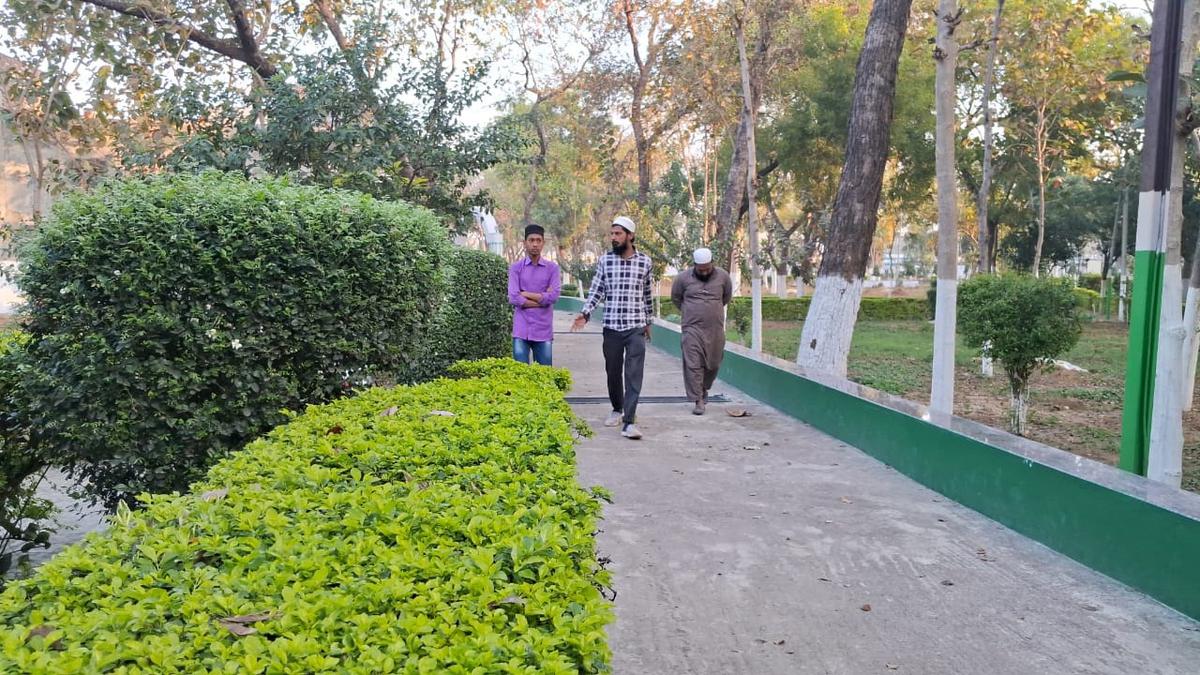
Home of the dead being transformed into a park for the living in Gaya
The Hindu
Transformed graveyard in Gaya district into a well-maintained park attracts hundreds for morning walks regardless of religious background.
In most cities, popular spots for a brisk morning jog or a leisurely evening stroll are parks with lush greenery, or a riverside path. In the town of Karimganj, in Bihar’s Gaya district, hundreds of people now take their daily walks surrounded by dead bodies.
A 150-year-old graveyard, used for burials by the local Muslim community, has been transformed over the last year into a well-maintained park frequented by ardent walkers, regardless of religious background. The transformation, effected with no support from the State government, but rather sustained by donations from local residents and grassroots politicians, has become the talk of the town.
“There is no park in this locality of ward number 25 and 26. This graveyard falls in between. In the morning, along with the morning walk, the Fatiha [recited in obligatory and voluntary prayer by Muslims] is also carried out by the people. So, two things are done at one time. Most people used to do it at their respective homes, but ever since this graveyard has been renovated, and more than 2,500 trees and plants have been planted here, people throng in large numbers for the morning and evening walk. There is no restriction for anyone. People of all communities can utilise the facility,” said Zameer Alam, secretary of the Karimganj graveyard.
Five years ago, the graveyard was in very poor condition, without any boundary wall or water connection, system, and was a haunt of anti-social elements. Now, however, renovations have provided all facilities, including well-kept pathways and lighting, so that visitors are able to safely stroll around as late as 10 p.m. There are seven staff members, including a gardener to tend the plans and flowers.
The average daily footfall is nearly 250, and is expected to rise as summer arrives. The two wards have a total population of 55,000, of which 16,000 are Muslims.
Spread over six acres of land, the graveyard is looked after by a 13-member committee. Last year, the then-Minister of Minority Affairs Jama Khan visited the graveyard, and offered financial help, which the committee refused.
The graveyard has two sources of income: burial fees, and donations from local residents and ward councillors. The committe charges ₹3,000 per burial, and ₹900 for the burial of children below five years of age. There are 30 to 35 burials that take place each month.











